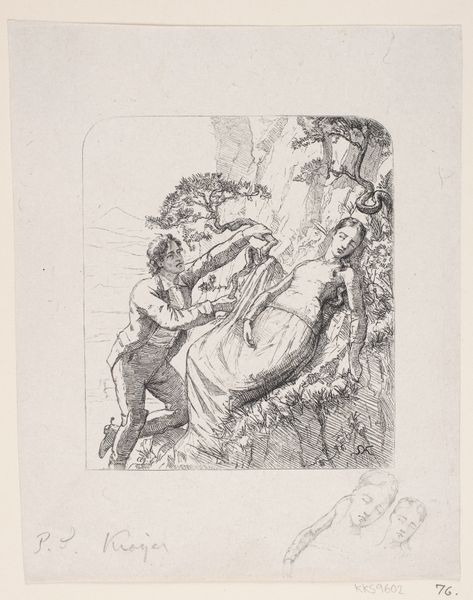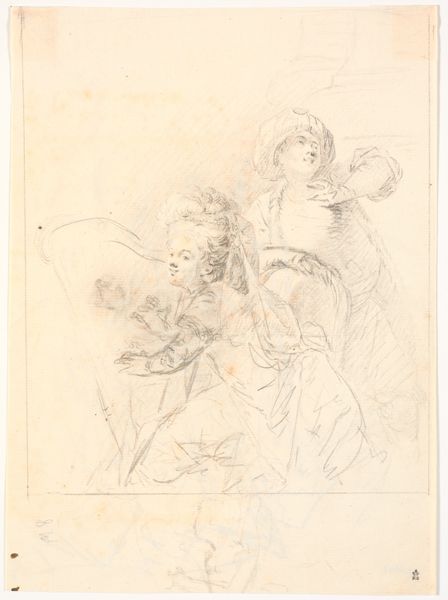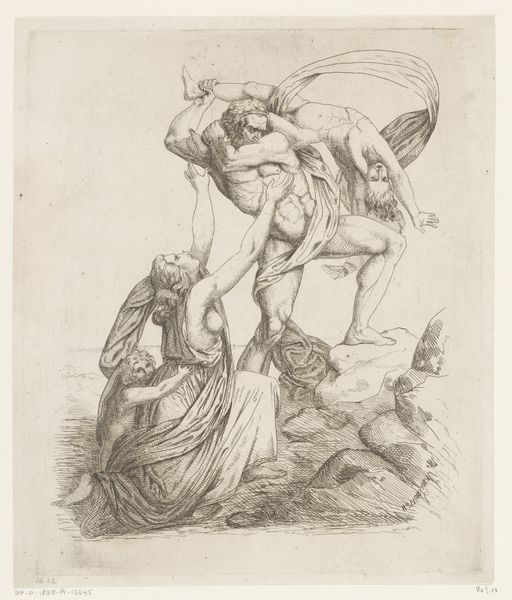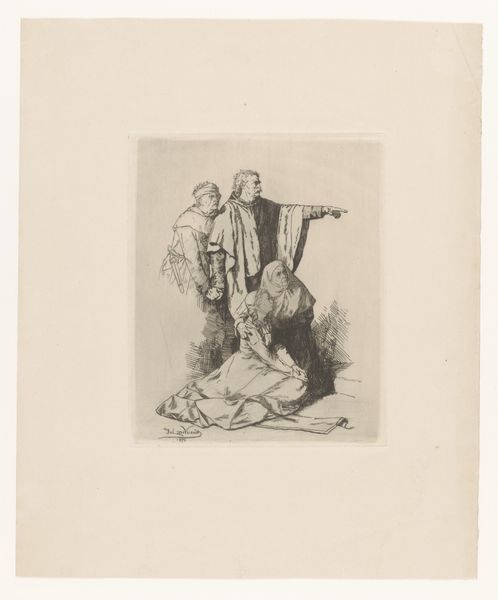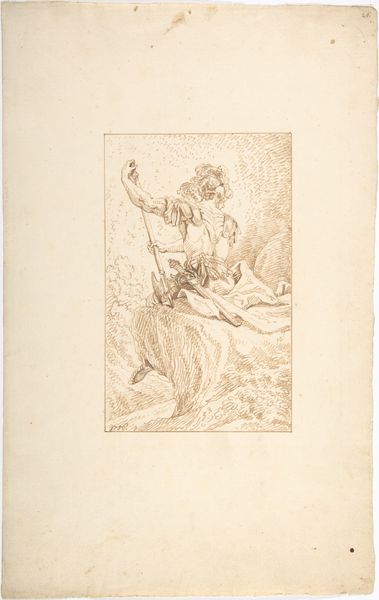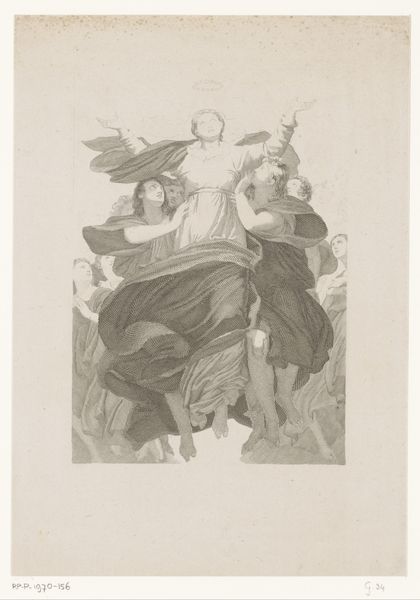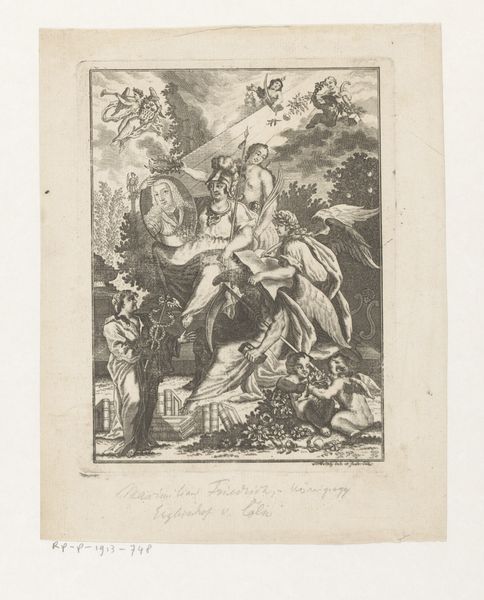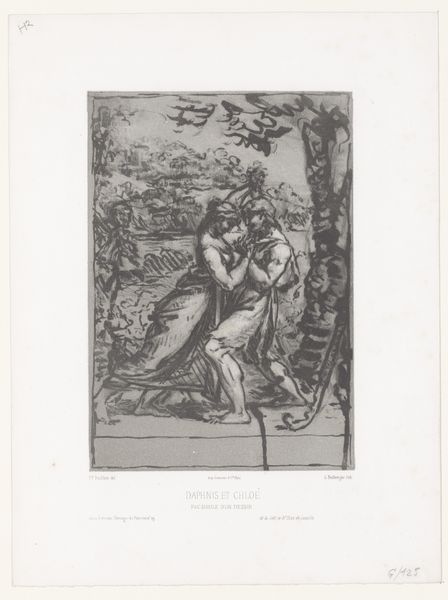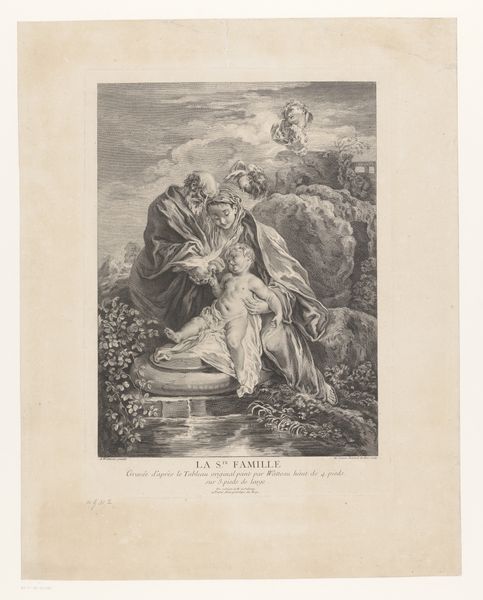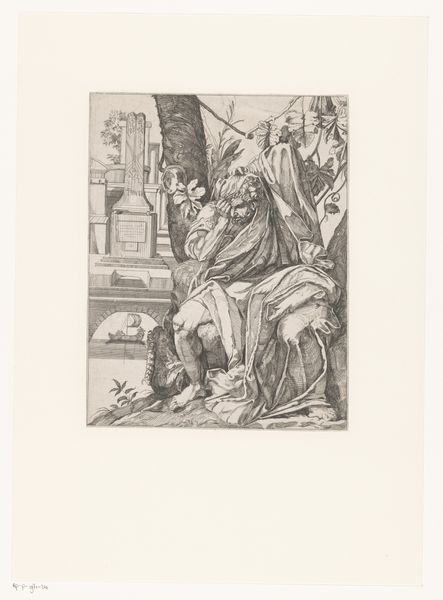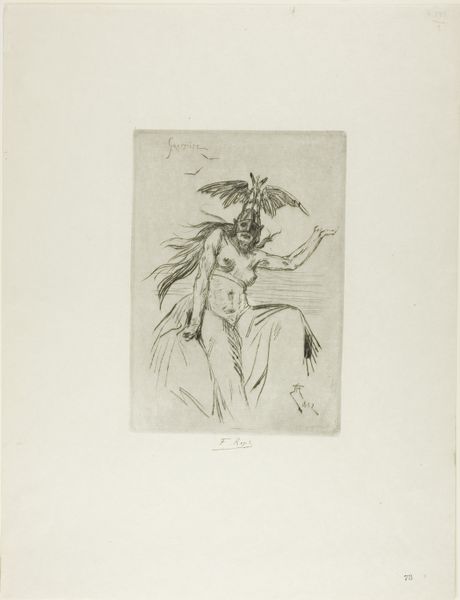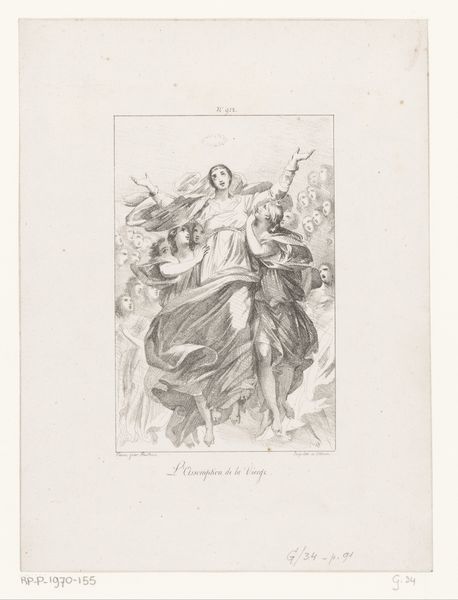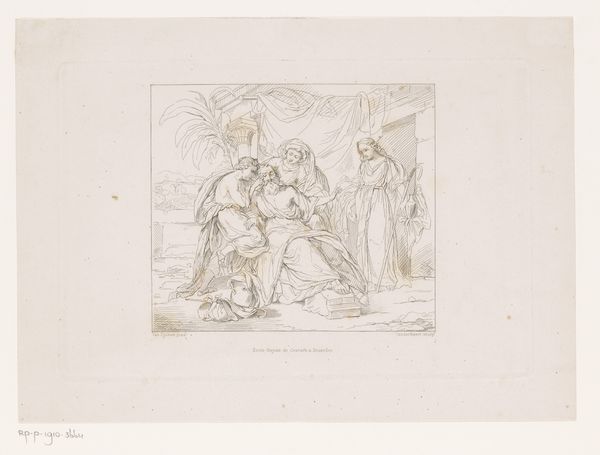
drawing, print, etching, paper, engraving
#
drawing
#
allegory
# print
#
etching
#
pencil sketch
#
landscape
#
etching
#
figuration
#
paper
#
history-painting
#
engraving
Dimensions: height 222 mm, width 147 mm
Copyright: Rijks Museum: Open Domain
Editor: Here we have Karel Ooms's "Maagd en leeuw van Vlaanderen," created around 1870. It appears to be a drawing or print – possibly an etching or engraving – depicting a woman and a lion. There is definitely a lot going on; a historical or allegorical scene? What stands out to you as you consider this piece? Curator: Let's start with the material production: an engraving from 1870. How was this image consumed? Was it for mass distribution in newspapers, books, or perhaps for individual sale? Its purpose is tied to the materials and their accessibility. Who had access to this image? This dictates the narrative it was trying to convey. Editor: That makes sense. It feels almost like propaganda, now that I'm thinking of the context. How would an average person in Flanders have interpreted it then? Curator: Absolutely. Consider the labor involved. The engraver, Ooms, and those involved in the paper production – each contributed to this visual statement. What commentary does this production have? Flanders using labor to display and produce propaganda. How were workers incentivized, treated, or rewarded? Editor: So, the "means of production" in a literal sense, and in how that impacts how the subject is viewed... Curator: Precisely! The choice of engraving itself signals a connection to a broader historical context. Why this choice, what effect on the audience might it produce, or reproduce. We can infer that the consumption of raw materials in the industrial age can show an audience and patron’s values as well. Editor: Thinking about the physical process of making the art, the availability of these images, has broadened my view quite significantly, it opens up how people would interact with art. Thank you for sharing this perspective. Curator: It's vital to recognize how artistic creation reflects not just aesthetic choices, but the socio-economic conditions of its making. I learned to apply a fresh, more grounded critical approach when discussing these beautiful images.
Comments
No comments
Be the first to comment and join the conversation on the ultimate creative platform.
